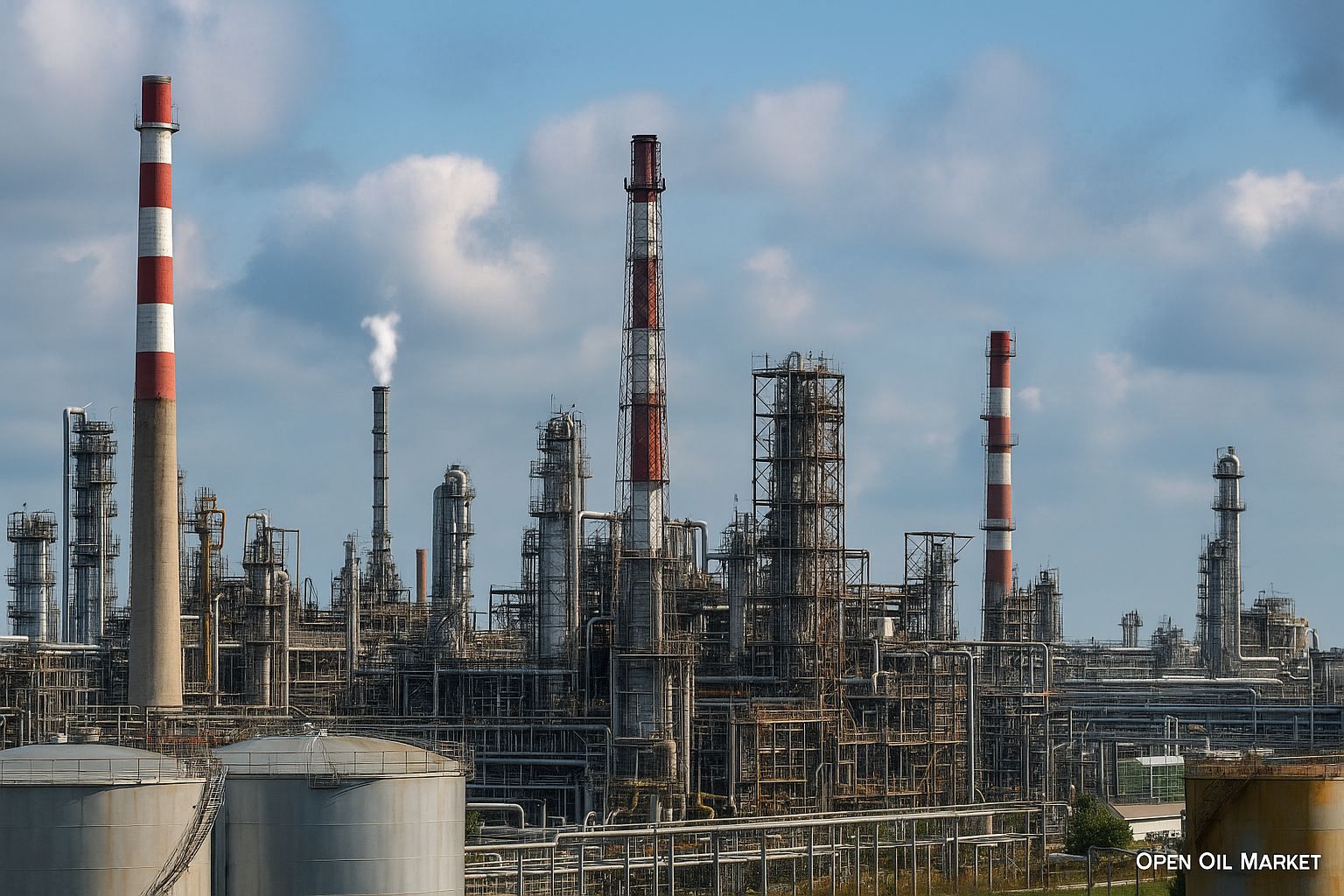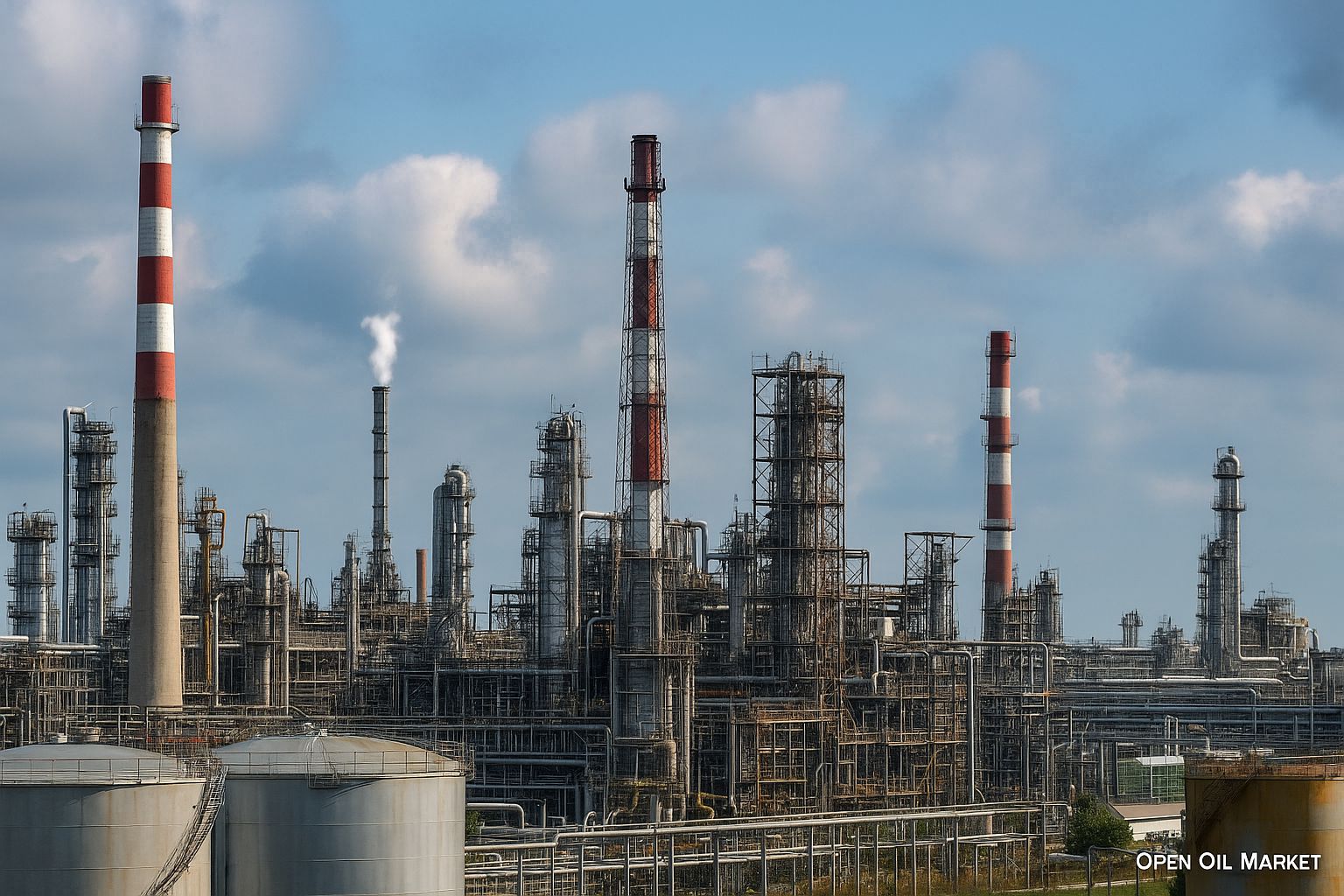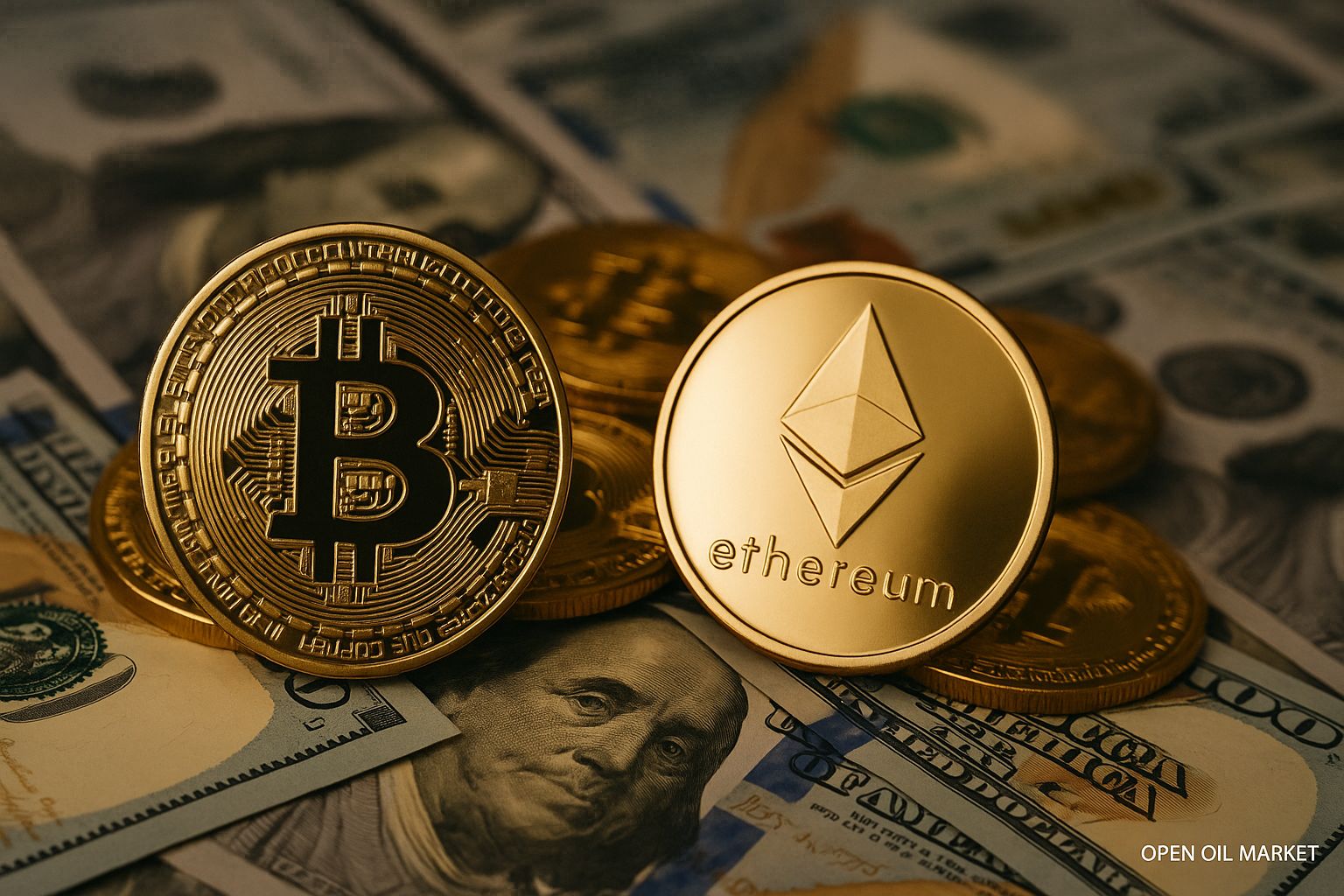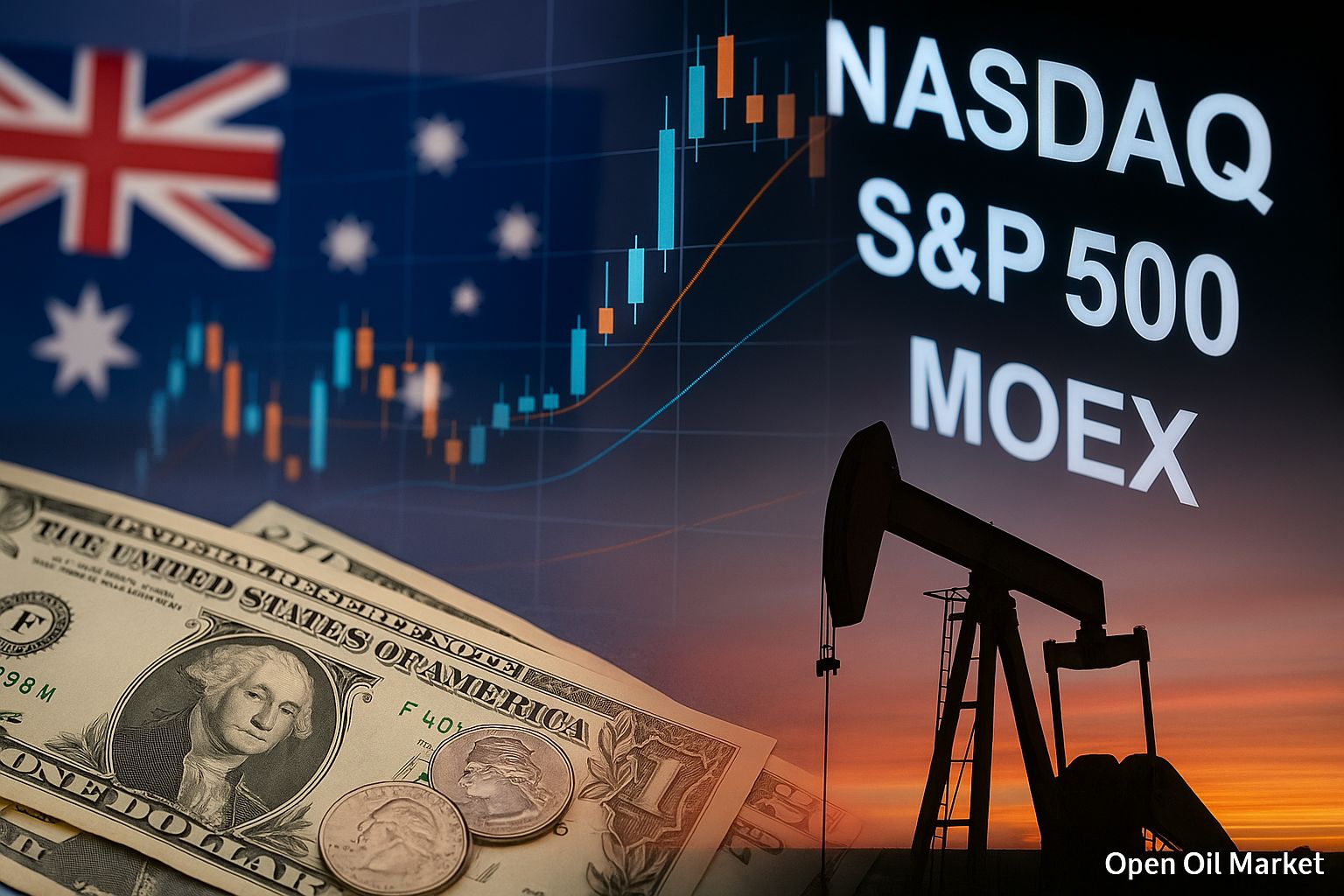
Energy Sector News, Tuesday, August 26, 2025 – The U.S. Escalates Sanction Tensions, Oil Approaches $70, Gas Prices Surge Ahead of Winter, Russia Maintains Control of Fuel Market
The latest developments in the fuel and energy sector as of August 26, 2025, are attracting attention from investors and market participants with conflicting signals. Eleven days have passed since the historic meeting between the Presidents of Russia and the United States in Alaska; however, there has been no breakthrough in relations, and negotiations have reached a stalemate, intensifying fears of further escalation in sanction tensions. The U.S. side is already transitioning from rhetoric to action by imposing new trade restrictions against Moscow's allies, thereby increasing overall uncertainty in the energy market.
The global oil market, which was recently under pressure due to oversupply and weakening demand, is showing signs of recovery at the beginning of the new week – the price of benchmark Brent crude has risen sharply towards the psychological mark of $70 per barrel, reflecting a fragile balance of factors. The European gas market, despite record gas reserves in storage, is facing rising prices ahead of autumn, as traders factor in risks of potential shortages, remembering last year's crisis. Simultaneously, the global energy transition is gaining momentum – many countries are reporting new records in "green" generation, although governments do not abandon traditional resources for the reliability of energy systems.
In Russia, following a recent spike in fuel prices, authorities continue to implement a series of measures aimed at stabilizing the domestic market. Below is a detailed overview of the key news and trends in the oil, gas, electricity, and raw materials sectors as of this date.
Oil Market: Price Growth and Mixed Influencing Factors
Global oil prices rose last week for the first time after several weeks of decline, although they remain relatively stable under the influence of fundamental factors. The Brent crude price increased from approximately $65 to around $68 per barrel (with U.S. WTI rising to about $63-$65), marking the first weekly price increase in the past three weeks. Nonetheless, current levels are still about 10% lower than the figures from a year ago, indicating a gradual market correction following the peaks of the energy crisis in 2022-2023. Several opposing factors are currently affecting price dynamics:
- OPEC+ Production Increase: The oil alliance is gradually ramping up market supply. In August 2025, the cumulative production quota for key agreement participants has been increased by about 548,000 barrels per day, with a similar increase expected in September. This policy continues the trend of recent months, as the production cuts have been slowly eased since spring, leading to an increase in global oil and petroleum product inventories.
- Slowing Demand Growth: The pace of global oil consumption is decreasing. The International Energy Agency (IEA) has revised its 2025 demand growth forecast down to approximately +0.7 million barrels per day (compared to +2.5 million barrels per day in 2023). Even OPEC's estimates have become more cautious, around +1.3 million barrels per day by the end of 2025. The reasons include weakened economic activity worldwide and the effects of high prices from previous years that incentivized energy conservation. Additionally, slowing industrial growth in China is limiting the appetite of the world's second-largest oil consumer.
- Geopolitical Uncertainty: The protracted conflict and new sanction measures add a risk premium to the market. On one hand, the lack of progress in resolving the crisis means continued (and in some instances, increased) Western sanctions pressure on Russia, which drives prices upward. On the other hand, the ongoing diplomatic contacts somewhat temper panic. As a result, oil prices fluctuate within a narrow range, failing to receive a momentum for either a rapid rally or a sharp decline.
The cumulative impact of these factors creates a moderate oversupply situation, keeping the oil market close to a surplus state. Exchange prices remain significantly below last year’s highs. Some analysts believe that if current trends persist, by 2026, the average Brent price could drop to around $50 per barrel – half the peak values reached during the energy crisis.
Gas Market: Record Reserves Do Not Eliminate Price Volatility
Europe remains the focal point of the gas market. EU countries are rapidly injecting natural gas into underground storage facilities, preparing for the autumn-winter period; currently, Europe’s UGS stocks are over 90% full, providing a solid winter reserve and previously keeping prices moderate. However, as hopes for a quick end to the conflict diminish, traders are once again pricing in risks of potential supply shortages. Amid the absence of prospects for the return of significant volumes from Russia and the beginning of a new phase of technical work at North Sea offshore fields in Norway, European gas prices have risen.
Futures prices for the next month at the TTF hub (Netherlands) rose last week from around $380 to approximately $410 per 1,000 cubic meters – this is the first increase after several weeks of decline. Given the prolonged conflict, Europe will likely have to continue living under conditions of limited gas supplies, compensating for shortfalls through purchases of liquefied natural gas (LNG) and competing with Asia at higher prices. The rate of replenishment of European stocks is currently lower than last year, although their absolute level is significantly higher – this reduces the risk of severe shortages in winter. Overall, gas prices remain much lower than the peak levels of 2022 due to accumulated reserves and demand reduction measures. However, the approaching winter and uncertainty over future supplies will keep gas market volatility high in the coming months.
International Politics: Dialogue Stalls, Sanctions Pressure Increases
On August 15, a meeting took place in Anchorage (Alaska) between the Presidents of Russia and the U.S. As August draws to a close, the outcomes remain uncertain: no breakthrough on key issues has been achieved, and negotiations have effectively stalled. U.S. President Donald Trump has declared his intention to organize a direct summit between Russia and Ukraine and is "watching the process from the sidelines," but there have been no advancements in preparations for a meeting between Vladimir Putin and Volodymyr Zelensky. Russian Foreign Minister Sergey Lavrov notes the lack of a clear agenda for a potential summit and places responsibility on Kyiv, which, according to him, is saying "no" to any constructive proposals.
As the likelihood of a swift ceasefire decreases, the risk of tightening Western sanctions against Russia is increasing. ING experts emphasize that the less realistic a quick peace is, the higher the chances that Washington will opt for further restrictions. Signs of this are already emerging – Washington has taken the unprecedented step of targeting one of Moscow's allies. President Trump signed an order to increase tariffs on imports from India by an additional 25 percentage points, bringing the total tariff to 50% from August 27, as punishment for New Delhi’s ongoing purchases of Russian oil. This move marks a new phase of sanctions pressure and signals that similar measures could threaten other significant buyers of Russian energy resources. India has expressed disappointment with the sudden tariffs, emphasizing that it was not warned about such severe measures; however, New Delhi states that its oil imports from Russia are dictated by national interests and cannot be sharply reduced.
The West continues to exert pressure in other areas. The U.S. is imposing sanctions against several companies and tanker fleets involved in trading Iranian oil, while the UK is targeting an Iranian business magnate and associated entities. Although these measures do not directly affect Russia, they reflect the general course towards strict control over global energy resource flows. Thus, geopolitical factors continue to cast a shadow over the energy sector: dialogue between the powers has stalled, and the sanctions regime remains strict, stifling prospects for normalizing energy trading.
Asia: India Aims for Energy Independence, China Increases Production
- India: Under unprecedented pressure from the West (including the U.S. doubling tariffs on Indian exports to 50% from August 27 for cooperation with Russia), the country has made it clear that a sharp reduction in its imports of Russian oil and gas is unacceptable due to the key role of these supplies in its national energy security. New Delhi has managed to negotiate more favorable terms: Russian companies are forced to offer an additional discount on Urals oil (around $5 off the Brent price) to maintain access to the Indian market. Consequently, India continues purchasing Russian oil actively on preferential terms and even increases its imports of petroleum products from Russia to satisfy rising domestic demand. At the same time, the country’s leadership is taking steps to reduce reliance on imports in the long term. Prime Minister Narendra Modi announced the launch of a national program for deep-water oil and gas exploration on Independence Day (August 15). Under this initiative, the state company ONGC has commenced drilling ultra-deep wells (up to 5 km) in the Andaman Sea, with initial results being described as promising. This "deep-water mission" is intended to uncover new hydrocarbon reserves and bring India closer to its energy independence goal. Additionally, at a Foreign Ministers' meeting in Moscow on August 21, India and Russia agreed to strengthen trade and economic ties, signaling New Delhi's intention to maintain energy cooperation with Moscow despite external pressure.
- China: The largest economy in Asia is also ramping up its energy imports while simultaneously boosting domestic production. Chinese importers remain among the largest buyers of Russian oil and gas: Beijing has not joined Western sanctions and has taken advantage of the situation to import raw materials on favorable terms. According to China's customs statistics, in 2024, the country imported about 212.8 million tons of oil and 246.4 billion cubic meters of natural gas – these volumes increased by 1.8% and 6.2%, respectively, compared to the previous year. In 2025, the import of energy resources continues to grow, albeit at a more moderate pace due to last year's high base. At the same time, Beijing is stimulating its own oil and gas production: from January to July 2025, national companies extracted 126.6 million tons of oil (+1.3% year-on-year) and 152.5 billion cubic meters of gas (+6%). The growth in domestic production partially compensates for the increase in consumption but does not eliminate the need for imports. The Chinese authorities continue to invest in the development of fields and technologies to enhance well output. Nevertheless, given the scale of its economy, China's reliance on imported energy resources remains significant: analysts estimate that in the coming years, the country will import no less than 70% of its consumed oil and about 40% of the gas used. Thus, the two largest Asian consumers – India and China – will maintain a key role in global raw materials markets, combining strategies to secure foreign supplies with the development of their own resource base.
Energy Transition: Renewables Records and the Role of Traditional Generation
The global shift to clean energy continues to accelerate rapidly. Many countries are setting new records for electricity generation from renewable sources. In Europe, by the end of 2024, total generation from solar and wind installations has first surpassed electricity production from coal and gas plants. This trend continues into 2025: thanks to the commissioning of new capacities, the share of "green" electricity in the EU keeps growing, while the share of coal in the energy balance is declining after a temporary increase during the 2022-2023 crisis period. In the U.S., renewable energy is also reaching historic levels – at the beginning of 2025, more than 30% of all generation came from renewables, and the combined output from wind and solar for the first time exceeded generation from coal-fired power plants. China, the global leader in installed renewable capacity, annually brings online tens of gigawatts of new solar panels and wind turbines, continuously updating its records for green generation. According to the IEA, total investments in the global energy sector in 2025 will exceed $3.3 trillion, with more than half of these funds directed towards renewable projects, grid modernization, and energy storage systems. In particular, the U.S. plans to bring online about 33 GW of new solar power plants in a year – a record volume accounting for almost half of all new generating capacity.
At the same time, energy systems continue to rely on traditional generation to maintain stability. The growing share of solar and wind creates challenges for grid balancing during times when renewable output is low. Gas and even coal plants are again being called upon to meet peak demand and reserve capacity in some regions. For instance, in certain parts of Europe last winter, there was a necessity to briefly increase coal-fired power generation during windless weather – despite the environmental costs. Governments in many countries are investing in developing energy storage systems (industrial batteries, pumped storage facilities) and "smart" grids capable of flexibly managing loads. These measures aim to enhance the reliability of energy supply as the share of renewables increases. Experts predict that by 2026-2027, renewables could become the leading source of global electricity generation, finally surpassing coal. However, in the coming years, there will remain a need for support from traditional power plants as a safeguard against outages. Thus, the energy transition is reaching new heights but requires a delicate balance between "green" technologies and traditional resources.
Coal: Strong Demand Sustains Market Stability
Despite the rapid development of renewable energy, the global coal market retains significant volumes and remains a crucial part of the global energy balance. Demand for coal is particularly high in the Asia-Pacific region, where economic growth and energy needs drive intense consumption of this fuel. China, the world's largest consumer and producer of coal, is maintaining coal combustion levels close to record highs in 2025. Chinese mines extract more than 4 billion tons of coal annually, covering the lion's share of domestic demand, though this is barely enough to satisfy record demand during peak load periods (for example, in hot summer months when air conditioning is widely used). India, possessing substantial coal reserves, is also increasing its consumption: over 70% of electricity in the country is still generated at coal-fired power plants, and absolute coal consumption is rising alongside the economy. Other developing countries in Asia (such as Indonesia, Vietnam, Bangladesh, etc.) continue to build new coal-fired power plants to meet the growing demand from the populace and industry.
Global coal production and trade have adapted to sustained high demand. Major exporters – Indonesia, Australia, Russia, South Africa – have increased production and exports of energy coal in recent years, which has helped keep prices relatively stable. Following price spikes in 2022, energy coal prices have returned to more normal levels and have fluctuated within a narrow range in recent months. For example, the price of coal at the European ARA hub is currently around $100 per ton. The balance of supply and demand appears well-matched: consumers can reliably obtain fuel while producers secure stable sales at profitable prices.
While several countries have announced plans to gradually reduce coal use for climate goals, this resource will remain indispensable for the energy supply of billions of people over the next 5-10 years. Experts believe that in the upcoming decade, coal generation, especially in Asia, will continue to play a significant role, despite global decarbonization efforts. Thus, the coal sector is experiencing a period of relative equilibrium: demand remains robust, prices are moderate, and the industry continues to be one of the pillars of the global energy system.
The Russian Oil Products Market: Measures to Stabilize Fuel Prices
Emergency measures are currently being taken in the Russian fuel market to normalize the pricing situation. In the first half of August, wholesale exchange prices for gasoline in the country reached new historical highs, exceeding even the peaks of 2023. Amid high summer demand (the vacation season and harvesting in the agricultural sector) and limited fuel supplies in certain regions, a local gasoline shortage arose. The government has intensified market regulation: on August 14, a meeting of the operational headquarters chaired by Deputy Prime Minister Alexander Novak was held to monitor the situation in the energy sector, at which a series of measures were announced to reduce price hysteria, including:
- Extension of the Export Ban: The full ban on the export of motor gasoline and diesel fuel from Russia, introduced in early August, has been extended until the end of September and applies to all producers (including major oil companies).
- Partial Resumption of Supplies: From October, restrictions are expected to be partially eased – if the market balance improves by that time, major oil refineries will be allowed to resume certain export shipments, while embargoes will likely remain for independent oil terminals, traders, and small oil refineries.
- Fuel Distribution Control: Among the reasons for the shortage were unscheduled shutdowns at several oil refineries (accidents and drone attacks disrupted operations at major plants, reducing gasoline output). Authorities are now increasing oversight of resource distribution within the country. Producers are required to first meet domestic market needs and to avoid practices of mutual exchange trading that had previously driven prices higher. The Ministry of Energy, Federal Antimonopoly Service, and St. Petersburg Commodity and Raw Materials Exchange (SPbMTSB) are developing long-term measures to establish a system of direct contracts between refineries and end fuel suppliers, bypassing exchanges – to eliminate unnecessary intermediaries from the sales chain.
- Subsidies and Price Dampers: Budgetary subsidies and the mechanism of "reverse excise duty" (the so-called damper) continue to compensate oil companies for a portion of lost export revenues, encouraging them to direct a greater volume of products to the domestic market.
The combination of these measures aims to gradually stabilize prices and prevent fuel shortages. Extending the export ban should redirect an additional approximately 200,000 to 300,000 tons of gasoline to the domestic market each month – about the amount that was previously sent for export. At the same time, subsidies maintain an economic incentive to prioritize supplying the domestic market. The government states that it is taking preemptive action: if necessary, restrictions on the export of oil products will be extended further, and in regions experiencing shortages, additional resources will be promptly dispatched from reserves.
So far, the fuel crisis is being contained: despite record exchange prices, retail prices at gas stations have only risen by approximately 5% since the beginning of the year (within the bounds of inflation). It is essential to avoid a repeat of last year’s situation, where sharp price spikes for gasoline in certain months hit consumers and farmers hard. Currently, gas stations are well supplied with fuel, and the implemented measures are gradually cooling wholesale prices.
Monitoring the situation continues at the highest level. On August 25, Deputy Prime Minister Alexander Novak held another meeting of the operational headquarters on the fuel market, and the Ministry of Finance and the Ministry of Energy will present recalculations for adjusting the parameters of the fuel damper (retroactively from August 1) by September 10. An increase in the allowable range of deviation of wholesale prices from indicative levels while maintaining compensations is anticipated, enabling oil companies to continue receiving payments from the budget even at current high prices. This will allow them to keep supplying the domestic market with fuel despite ongoing export restrictions. Thus, the state is enhancing the effect of the measures taken and is prepared to swiftly implement new tools if necessary – to ensure stable domestic fuel supply and keep prices for end consumers within acceptable limits.
Telegram Channel OPEN OIL MARKET – Daily Analytics of the Energy Sector
To stay informed about the latest events and trends in the fuel and energy market, subscribe to our Telegram channel OPEN OIL MARKET (@open_oil_market). There you will find daily reviews, industry insights, and exclusive analytics that will help you respond in a timely manner to changes in the oil, gas, and other energy markets.




